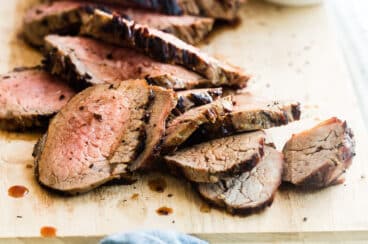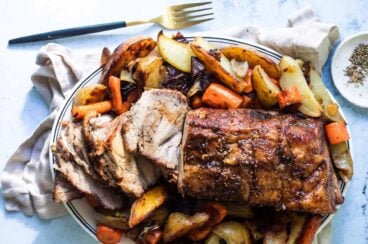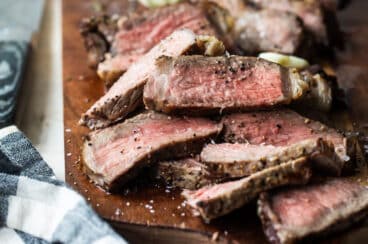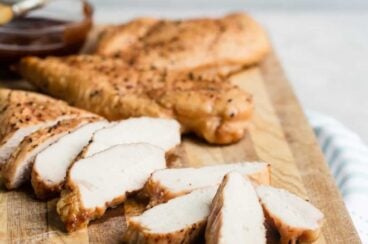This post may contain affiliate links. For more information, please see our affiliate policy.
This easy, versatile Dry Rub seasoning blend is full of smoky spice, heat, and sweetness. It’s a delicious choice for grilling and roasting meat, poultry, and vegetables, and you can customize it to your personal taste.
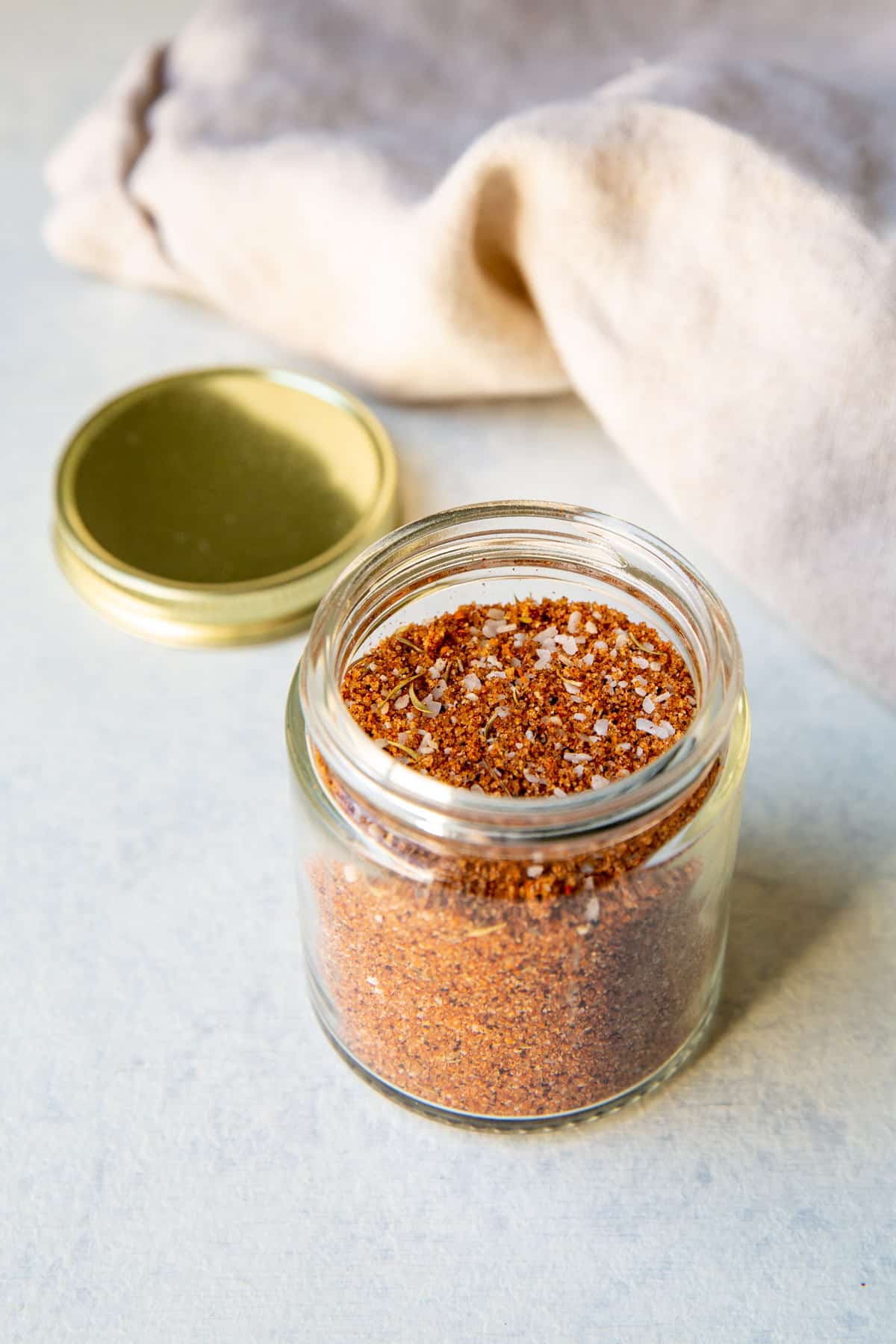
This Dry Rub is not a 2-ingredient miracle like Lemon Pepper Seasoning, but the long list of ingredients is exactly the point. You get layers upon layers of Southwest chiles bringing heat and smokiness paired with brown sugar for sweetness and classic spices like garlic and onion powder.
With a blend like this, it’s better to make a big batch so you can use it often. It’ll keep for 6 months in the pantry, or you can keep it in the freezer indefinitely.
I love it on Smoked Tri Tip, grilled chicken, Pork Roast, and any kind of steak. What it lacks in simplicity, it makes up for in taste.
Table of Contents
Recipe ingredients
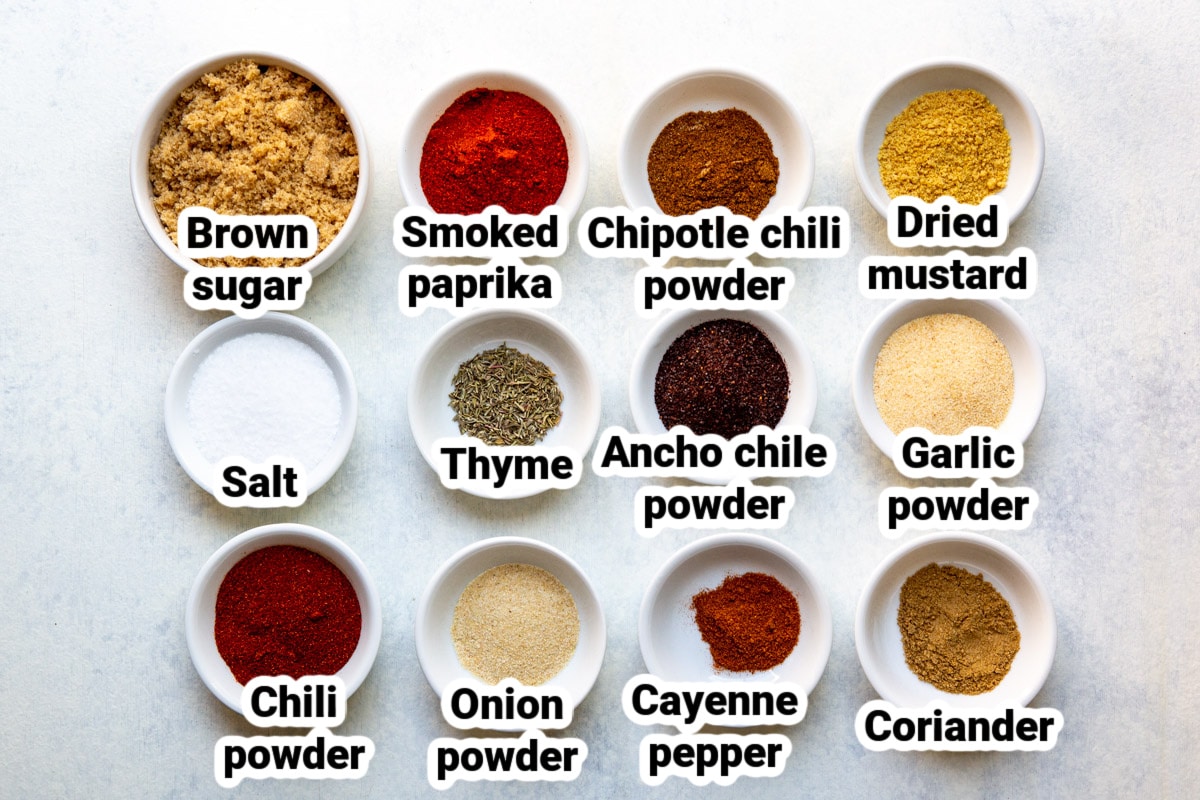
At a Glance: Here is a quick snapshot of what ingredients are in this recipe.
Please see the recipe card below for specific quantities.
Ingredient notes
- Salt: Control the salt in your recipes by omitting it from the blend. When you cook with the Dry Rub, you can salt your meat, vegetables, or anything else at that time and use just what you need.
- Chipotle chili powder: Adds smokiness and spice. If you don’t have it, try one or two chipotle peppers in adobo sauce or some ancho chile powder (smokiness without the heat).
- Coriander: The dried seeds of the cilantro plant.
Instructions
- In a small bowl or in a jar with a tight-fitting lid, add brown sugar, salt, chili powder, garlic powder, ancho chile powder, onion powder, smoked paprika, chipotle chili powder, dried mustard, cayenne pepper, coriander, and crushed thyme. Whisk or shake to combine.
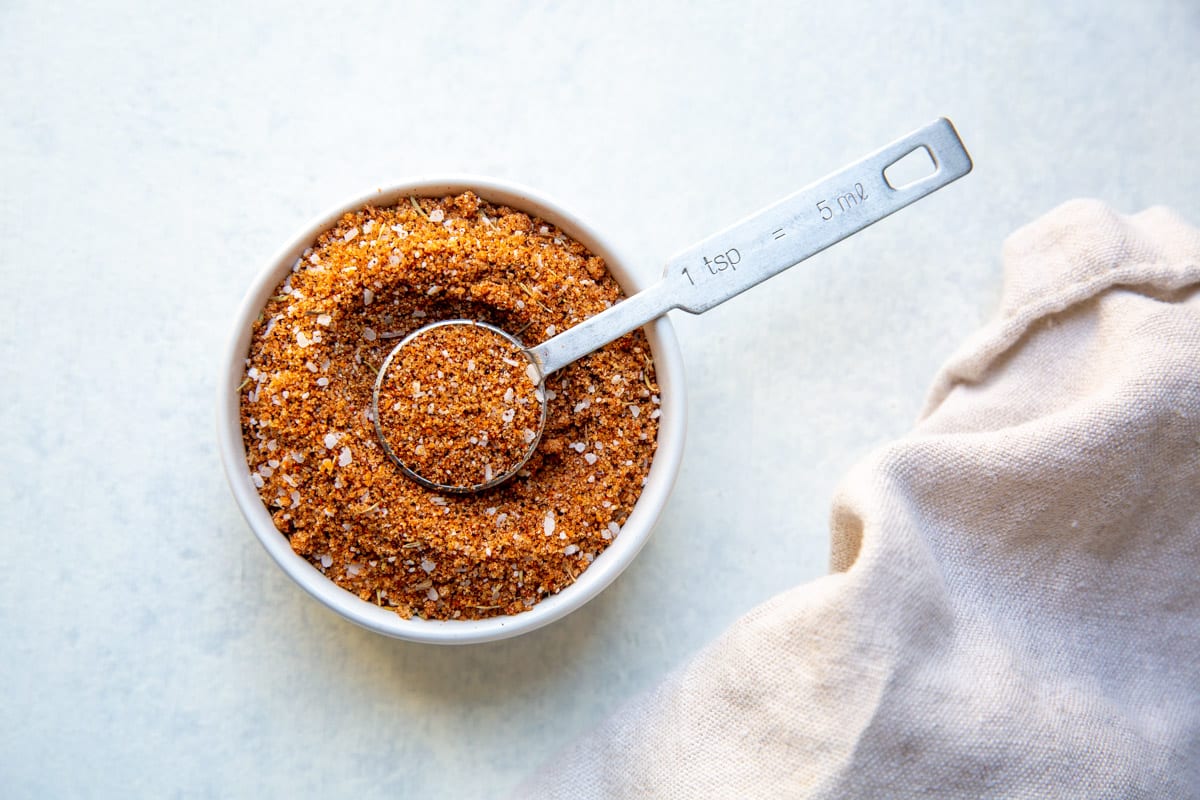
Recipe tips and variations
- Yield: This Dry Rub recipe makes about 1 cup of spice, enough to season 4-6 large pieces of meat depending on how much you use.
- Storage: Store this Dry Rub seasoning blend in a spice jar or other airtight container in a cool, dark place for up to 6 months.
- Freezer: The Dry Rub can be frozen indefinitely (just label, date, and pack in a freezer-safe container such as a mason jar or freezer-safe plastic bag).
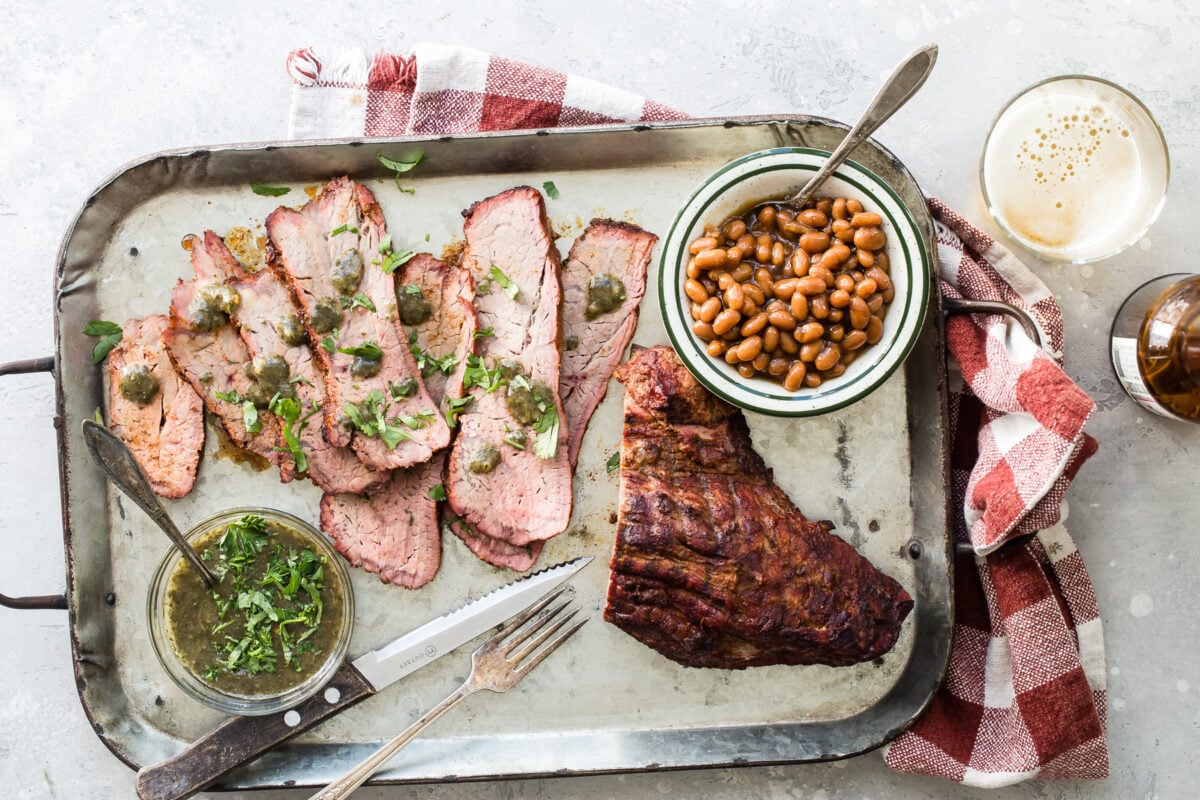
Recipe FAQs
They are the same thing; it’s really just a matter of naming conventions. “Chile” is the Spanish word for capsicums such as jalapeños, serranos, habañeros, poblanos, and so on. Americans sometimes spell it “chili” but now we are moving towards “chile” because “chili” is the stew with the meat.
We sometimes say “pepper” in the United States because when Columbus arrived, he thought chiles were “peppers” (as in spicy black pepper, a member of the Piper genus). He was wrong. We always use the word “pepper” for non-spicy peppers such as bell peppers.
Ancho chiles are ripened poblano peppers that have been dried. They have a smoky flavor that is common in Mexican and Southwestern cooking. Their flavor is mild (1,000 – 2,000 Scoville heat units). Their skins are wrinkly and look a little bit like giant raisins with a stem.
Poblanos at the store are green because they are harvested before they are ripened. When the poblanos ripen, they turn red. Those red poblanos are then dried to make ancho chiles.
Chili powder is a blend made from various ground spices including, but not limited to, ground chiles, garlic powder, onion powder, paprika, and/or cayenne pepper. Ancho chile powder is just one specific chile, dried poblanos, that have been ground up. It is slightly spicier than regular chili powder.
Note: If you shop at an international food market and buy “chili powder,” sometimes this is just straight-up ground dried red chiles (cayenne pepper), not the Americanized chili powder blend you’re thinking of. You should be able to tell by the color of the powder.
You can substitute regular chili powder plus a small amount of crushed red pepper for heat.
1 teaspoon ancho chile powder = 1 teaspoon regular chili powder + ⅛ to ¼ teaspoon crushed red pepper
Put your dry rub to work
Beef Recipes
Grilled Tri-Tip
Main Dishes
Pork Roast
Beef Recipes
Grilled New York Strip Steak
Grilling and Smoker Recipes
Smoked Chicken Breast
Join Us
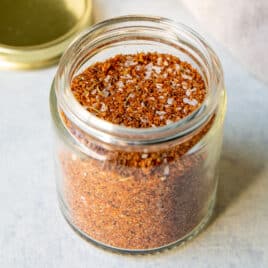
Dry Rub
Ingredients
- 1/2 cup light brown sugar packed
- 3 tablespoons salt (see note 1)
- 1 tablespoon chili powder
- 1 tablespoon garlic powder
- 1 tablespoon ancho chile powder
- 1 tablespoon smoked paprika
- 1 teaspoon onion powder
- 1 teaspoon chipotle chili powder (see note 2)
- 1 teaspoon dried mustard
- ½ teaspoon cayenne pepper
- ½ teaspoon coriander (see note 3)
- ½ teaspoon thyme crushed
Instructions
- In a small bowl or in a jar with a tight-fitting lid, combine brown sugar, salt, chili powder, garlic powder, ancho chile powder, onion powder, smoked paprika, chipotle chili powder, dried mustard, cayenne pepper, coriander, and crushed thyme. Whisk or shake to combine.
Notes
- Salt: Control the salt in your recipes by omitting it from the blend. When you cook with the Dry Rub, you can salt your meat, vegetables, or anything else at that time and use just what you need.
- Chipotle chili powder: Adds smokiness and spice. If you don’t have it, try one or two chipotle peppers in adobo sauce or some ancho chile powder (smokiness without the heat).
- Coriander: The dried seeds of the cilantro plant.
- Yield: This Dry Rub recipe makes about 1 cup of spice, enough to season 4-6 large pieces of meat depending on how much you use.
- Storage: Store this Dry Rub seasoning blend in an airtight container in a cool, dark place for up to 6 months.
- Freezer: The Dry Rub can be frozen indefinitely (just label, date, and pack in a freezer-safe container such as a mason jar or freezer-safe plastic bag).
Nutrition
Meggan Hill is a classically-trained chef and professional writer. Her meticulously-tested recipes and detailed tutorials bring confidence and success to home cooks everywhere. Meggan has been featured on NPR, HuffPost, FoxNews, LA Times, and more.
